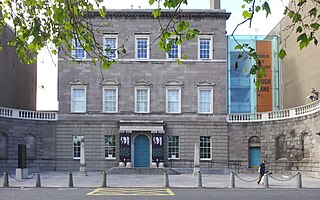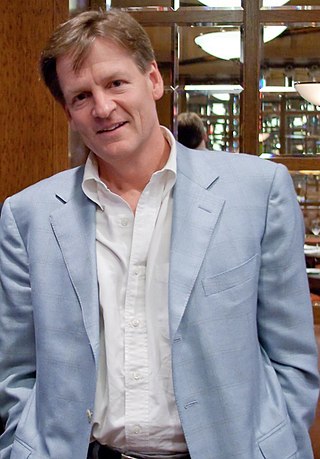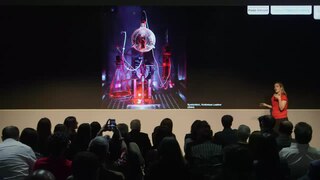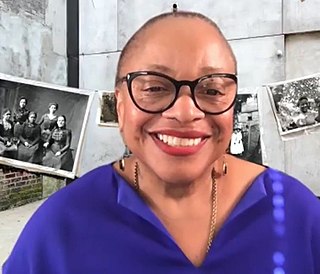Related Research Articles

Martin Parr is a British documentary photographer, photojournalist and photobook collector. He is known for his photographic projects that take an intimate, satirical and anthropological look at aspects of modern life, in particular documenting the social classes of England, and more broadly the wealth of the Western world.

Sir Thomas Browne was an English polymath and author of varied works which reveal his wide learning in diverse fields including science and medicine, religion and the esoteric. His writings display a deep curiosity towards the natural world, influenced by the Scientific Revolution of Baconian enquiry and are permeated by references to Classical and Biblical sources as well as the idiosyncrasies of his own personality. Although often described as suffused with melancholia, Browne's writings are also characterised by wit and subtle humour, while his literary style is varied, according to genre, resulting in a rich, unique prose which ranges from rough notebook observations to polished Baroque eloquence.

The Garden of Cyrus, or The Quincuncial Lozenge, or Network Plantations of the Ancients, naturally, artificially, mystically considered, is a discourse by Thomas Browne concerned with the quincunx—a pattern of five points arranged in an X (⁙), as on a die —in art and nature. First published in 1658, along with its companion Urn-Burial, in modern times it has been recognised as Browne's major literary contribution to Hermetic wisdom.

A curator is a manager or overseer. When working with cultural organizations, a curator is typically a "collections curator" or an "exhibitions curator", and has multifaceted tasks dependent on the particular institution and its mission. The term "curator" may designate the head of any given division, not limited to museums. Curator roles include "community curators", "literary curators", "digital curators", and "biocurators".
Robert Bernard Alter is an American professor of Hebrew and comparative literature at the University of California, Berkeley, where he has taught since 1967. He published his translation of the Hebrew Bible in 2018.

The Hugh Lane Gallery, officially Dublin City Gallery The Hugh Lane and originally the Municipal Gallery of Modern Art, is an art museum operated by Dublin City Council and its wholly-owned company, the Hugh Lane Gallery Trust. It is in Charlemont House on Parnell Square, Dublin, Ireland. Admission is free.
Lee Friedlander is an American photographer and artist. In the 1960s and 1970s, Friedlander evolved an influential and often imitated visual language of urban "social landscape," with many of his photographs including fragments of store-front reflections, structures framed by fences, posters and street signs. His work is characterized by its innovative use of framing and reflection, often using the natural environment or architectural elements to frame his subjects. Over the course of his career, Friedlander has been the recipient of numerous awards and his work has been exhibited in major museums and galleries worldwide.

Michael Monroe Lewis is an American author and financial journalist. He has also been a contributing editor to Vanity Fair since 2009, writing mostly on business, finance, and economics. He is known for his nonfiction work, particularly his coverage of financial crises and behavioral finance.

Andrew Zbigniew Szydlo is a British chemist and chemistry teacher, best known for his talks and lectures on chemistry.

Martin John Kemp is a British art historian and exhibition curator who is one of the world's leading authorities on the life and works of Leonardo da Vinci. The author of many books on Leonardo, Kemp has also written about visualisation in art and science, particularly anatomy, natural sciences and optics. Instrumental in the controversial authentication of Salvator Mundi to Leonardo, Kemp has been vocal on attributions to Leonardo, including support of La Bella Principessa and opposition of the Isleworth Mona Lisa.
In literature, writing style is the manner of expressing thought in language characteristic of an individual, period, school, or nation. As Bryan Ray notes, however, style is a broader concern, one that can describe "readers' relationships with, texts, the grammatical choices writers make, the importance of adhering to norms in certain contexts and deviating from them in others, the expression of social identity, and the emotional effects of particular devices on audiences." Thus, style is a term that may refer, at one and the same time, to singular aspects of an individual's writing habits or a particular document and to aspects that go well-beyond the individual writer. Beyond the essential elements of spelling, grammar, and punctuation, writing style is the choice of words, sentence structure, and paragraph structure, used to convey the meaning effectively. The former are referred to as rules, elements, essentials, mechanics, or handbook; the latter are referred to as style, or rhetoric. The rules are about what a writer does; style is about how the writer does it. While following the rules drawn from established English usage, a writer has great flexibility in how to express a concept. Some have suggested that the point of writing style is to:

Paola Antonelli is an Italian architect, curator, author, editor, and educator. Antonelli is the Senior Curator of Architecture and Design at the Museum of Modern Art (MoMA), New York, where she also serves as the founding Director of Research and Development. She has been described as "one of the 25 most incisive design visionaries in the world" by TIME magazine.
John Emsley is a UK popular science writer, broadcaster and academic specialising in chemistry. He researched and lectured at King's College London for 25 years, authoring or co-authoring about 100 papers, and then became Science Writer in Residence at Imperial College London in 1990. From 1997 to 2002 he was Science Writer in Residence at the Department of Chemistry at Cambridge University, England, during which time he started and wrote the newsletter Chem@Cam. He is the author of more than 12 books and several of them have been translated into other languages.

Deborah Willis is a contemporary African-American artist, photographer, curator of photography, photographic historian, author, and educator. Among her awards and honors, she is a 2000 MacArthur Fellow. She is currently Professor and Chair of the Department of Photography and Imaging at Tisch School of the Arts of New York University. In 2024, she was elected to the American Philosophical Society.
Sigmund Freud's views on religion are described in several of his books and essays. Freud considered God as a fantasy, based on the infantile need for a dominant father figure, with religion as a necessity in the development of early civilization to help restrain our violent impulses, that can now be discarded in favor of science and reason.

Mary Miss is an American artist and designer. Her work has crossed boundaries between architecture, landscape architecture, engineering and urban design. Her installations are collaborative in nature: she has worked with scientists, historians, designers, and public administrators. She is primarily interested in how to engage the public in decoding their surrounding environment.
Clare Strand is a British conceptual photographer based in Brighton and Hove in the UK. She makes, as David Campany puts it, "black-and-white photographs that would be equally at home in an art gallery, the offices of a scientific institute, or the archive of a dark cult. ... They look like evidence, but of what we cannot know."

Periodic Tales: The Curious Lives of the Elements is a 2011 popular science and history book by English writer Hugh Aldersey-Williams, on the history and cultural associations of the chemical elements. The book is divided into five sections, "Power", "Fire", "Craft", "Beauty", and "Earth", which group elements according to their primary cultural connotations, rather than their position on the periodic table. For certain elements such as phosphorus, the author documents his attempts to obtain samples by reproducing the original method of discovery. He also visits the site of discovery of several elements uncovered in modern times, including the famed Ytterby mine in Sweden, from which seven new elements were isolated.
Lola Flash is an American photographer whose work has often focused on social, LGBT and feminist issues. An active participant in ACT UP during the time of the AIDS epidemic in New York City, Flash was notably featured in the 1989 "Kissing Doesn't Kill" poster.
Maura Reilly is the director of the Zimmerli Art Museum at Rutgers University, and previously served as the founding curator of the Elizabeth A. Sackler Center for Feminist Art. Reilly is also known for developing the concept of ‘curatorial activism’.
References
- 1 2 "Four Way Interview - Hugh Aldersey-Williams". Popular Science UK. February 2011. Archived from the original on 12 May 2017. Retrieved 29 March 2011.
- 1 2 Farmelo, Graham (30 January 2011). "Periodic Tales by Hugh Aldersey-Williams: review". The Daily Telegraph . Retrieved 29 March 2011.
- ↑ "Periodic Tales". HarperCollins.[ dead link ]
- ↑ Campbell-Johnston, Rachel (2 October 2015). "It's elemental: art with good chemistry". Times online. Archived from the original on 17 October 2015. Retrieved 8 October 2015.